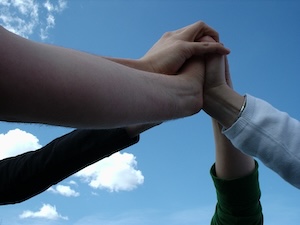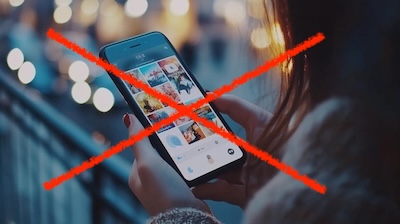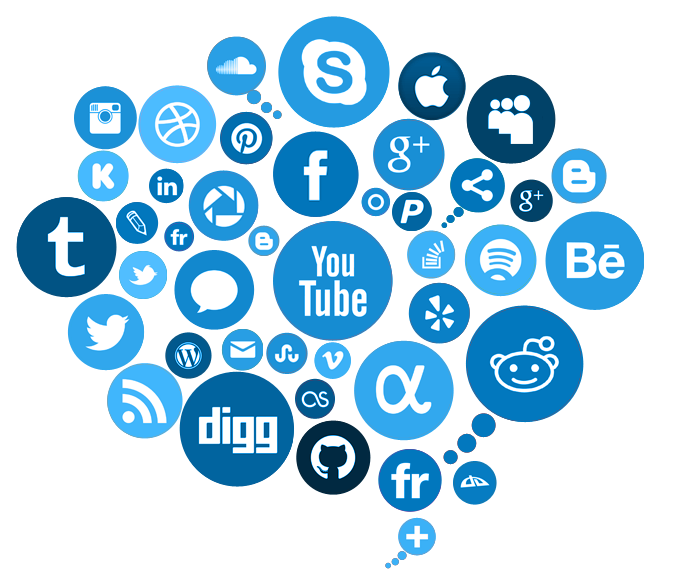Day Eleven: Get Social Again

Table of Contents
Two weeks to change the world
You've started in the process of getting your stuff off social media: great! But it is not enough to remove accounts and download data. That's because social media is not just about data. It relies upon webs of dependency between us to capture that data. In essence, it captures our relationships. Unless we reclaim those relationships from the platform's clutches, we will have no choice but to go back, delaying and weakening our departure.
This is important because these next two weeks are critical in your ability to leave. This is the time to practice your next steps and cut the cord.
Recall from Day Ten, that some of these systems require you to deactivate your account and not log back in for two weeks. In this time they will try to capture you back. They will tell you snippets of things your friends are doing; you will see a headline that includes a link to a Twitter/X article and you will click it thinking you're zooming in when actually you are logging in. And the clock resets. And there you are, going back for your sweater, when you should be moving on.
We are going to use these next two weeks to shift your habits, and get you working on laying the groundwork for next steps instead of retreading the same old path. To do so, we have to understand the functions that social media systems play in our lives so that we can replace those functions with something healthier.
In essence, we not only reclaim our data, we have to reclaim our sociality and our relationships.
What does Social Media Do?
Your mileage may vary, but the power of social media platforms is generally three-fold. Steps Four through Six address these functionalities and their undercurrents. Let's lay out what they are, and why they are so.
These are not obvious or inevitable components of social media: there is a "why" to all of them. Sure, the extraction of relationships for profit was a project born of the Great Recession. But social media as a phenomenon also responds to societal pressures that moved into high gear in the early part of the century.
First, social media connects us to our friends and families. Since the influence of globalization in the past forty years, we no longer live in co-present communities. We have been flung across the globe in pursuit of job opportunities or sustaining the flow of global capital. Social media stepped in at a time when our most intimate and sustaining relationships were fraying under extreme distance.
Second, it connects us to professional networks, colleagues, and opportunities. Corporations at the turn of the century were busy moving from the "gold watch" model of graduate-get-job-stay-until-retirement, toward a much more mobile workforce. Network connections tended to matter not just for getting your first job, but for the ability to move and stay nimble sequentially. In a moment when you can no longer eke out your hours for a promotion but must "move out to move up," having a system that can store and keep readily available (if peripheral) your networked connections guarantees your next gig.
Third, it's entertaining, and it makes us feel good. Its algorithmic amplification reminds us of what we like, whom we like, and who we are. Seeing our friends's faces scroll past, seeing political news or information that fits our favorite niches, seeing a silly meme, brings us joy and reminds us of our sense of self. Hence the little dopamine hit and the inability to stop scrolling (thanks, endless scroll).
We must replace these functions of social media with something else. It's not enough to delete your account and repossess your data. You must stay in touch with the far-flung people who make you whole. You must maintain visibility to people for your next job. And you must remind yourself daily who you are. That's what these next steps accomplish. This is how we say goodbye to the toxicity for good.
These steps allow you to take these next two weeks to invest in those next steps. You will lay the groundwork and infrastructure to replace and sustain the things that social media used to do for you, and you will do them in a far healthier way
Step Four: Migrate Your Relationships
You'll need a way to keep the relationships active and alive that you want to foster and maintain. Some of these are one to one, and some are groups that need a new place to meet, hang out, exchange information and joy. If there are groups you value being a part of, start the conversation with the rest about where you will move next.
There is no single answer to how to do this, but here are some (not-exhaustive) options to consider that range from resistance to alternatives that embrace data sovereignty -- you are welcome to share others as you come across them:
- Phone. Let your fingers do the walking. Set up a weekly or monthly check in with close friends and family. You'll be amazed how much better thirty minutes on the phone is than ten years of scrolling past someone's feed. Make sure to grab people's phone numbers before you leave Facebook.
- Signal. You can talk to people one on one or create group texts and connections. These groups allow the private and secure exchange of information, whether it's photos and recipes or book club data, or anything else.
- Email. Group email lists remain a useful way to stay in touch and coordinate among a group.
- Mastodon. If you're part of a larger group or organization you can set up your own instance together and manage your interactions collectively. Mastodon looks a lot like Twitter or Facebook, but you are in control of the underlying data and it's not collected in such a way as to monetize from you. Several professional organizations I'm a part of have set this up to encourage their members to continue to exchange information and stay in touch. If you're part of a professional group or network you might consider bringing this up at an upcoming meeting and pooling resources to do so.
- Matrix is an open source and private replacement for chat systems like Discord or Slack. You can get on the general Matrix server to chat with friends in a group, or run your own instance. You might find this helpful for managing smaller distributed groups of friends who are working on projects together.
- Pixelfed is an Instagram replacement that is federated, using the Mastodon protocol. That means that you choose to sign up for a single server, responsible for moderation practices and for the kinds of content you see. But you can see or follow or comment on any account that is running Pixelfed.
- Loops is Pixelfed's answer to TikTok. The system is still in Beta at time of writing but a lot of fun to play with. It's available on Android and the iOS app should be available shortly, or you can sign up to test it for the team.
- Yahoo! still runs the photo sharing site Flickr. This allows your photos to be visible to anyone, however if you are a serious photographer you can also post pictures under Creative Commons licenses for others to use. Remember that this is posting largely to the open web, but if you'd like to balkanize or Render to Caesar, this is also an option.
Step Five: Replace Your Hobbies
Now we are going to find a way to maintain that dopamine hit, that sense of pleasure you get from seeing the people and things that remind you of who you are. We are going to make another list: Things To Do That Are Not Scrolling.
You will put this list on a wall, or make it the background of your phone. For the next two weeks, every time your thumb hovers over where that social media app icon used to be, you will look at this list, choose something, and do it.
None of these To Do things will be a chore. They should be pleasurable, connecting, fun, or a treat. Here are some examples: Hobbies. Calling a friend. Eating a good meal. Going for a lovely walk. Watching your favorite movie. Playing an instrument. Volunteer. Listening to music. Taking your BFF for lunch. Playing basketball with your kid.
All the stuff that makes life enjoyable that we feel we don't have time for anymore because -- we're doomscrolling. Social media is taking that away from you, so now you are going to break your cycle of addiction by taking it back. Double win for you.
When I went off Facebook, I had hour long conversations with friends whose profiles I used to see on the site. I learned a new Bach prelude on the piano. I refreshed my Spanish on duolingo. I sewed some stuff, I hacked some stuff, I read some fiction books, I watched some movies. At the time I had a one-year old and a really intense job, yet I couldn't believe how much time I had on my hands.
Step Six: Stay in the Know
Step Six is, find your way to stay in the know. You need to replace that networking connection. You have a few options for this.
One is, find a friend or some other connection who can tell you what's going on. My mom sends me screenshots of Facebook updates from some of my friends she's connected to if something big is going on in their lives. Another friend of mine who's a parent sends me updates of goings on around time ("I know you hate technology so you're not on Facebook," she jokes. "I don't hate technology; I just hate Facebook!" I reply.)
Maybe you have a friend who is a TikTok junkie and they'll send you the memes to check out. Maybe it's mailing lists for your favorite businesses you won't know about anymore. Maybe it's a subscription to a tabloid so you can see waht all your favorite celebs are saying on Insta. Maybe it's making calendar alerts for peoples' birthdays. Think of this as beating FOMO into the ground.
It's also possible you need these systems for your work or professional career. Do you have friends or colleagues you need to follow for their papers or other notifications? Try an RSS feed from their websites to see if they have updates.
You might also keep LinkedIn or another one of these systems active just for your professional networks and contacts. Render to Caesar hard on this one: be very clear about who constitutes a professional colleague or network connection. Jettison the rest.
I know that Mark Grannovetter (the sociologist) famously argued in the 1970's that we get our jobs from our weak ties (your uncle's neighbor's cousin). But Microsoft, Meta, Snap and others don't need a map of everyone you've ever met for you to find your next gig. See what you can do to circumscribe these systems to just one facet of your life if you can.
* *
Go back to your Data Roadmap with these tools in hand. Day Ten gives you the technical details for getting rid of social media, Day Eleven (today) gives you the social replacements. Identify the systems you're on, which you can leave and how you will migrate those relationships, and which you will keep in their barest possible form.
Spend these next few weeks practicing these new habits as you go through one system after another, downloading and deleting. You'll be amazed how liberated and contented you feel.

